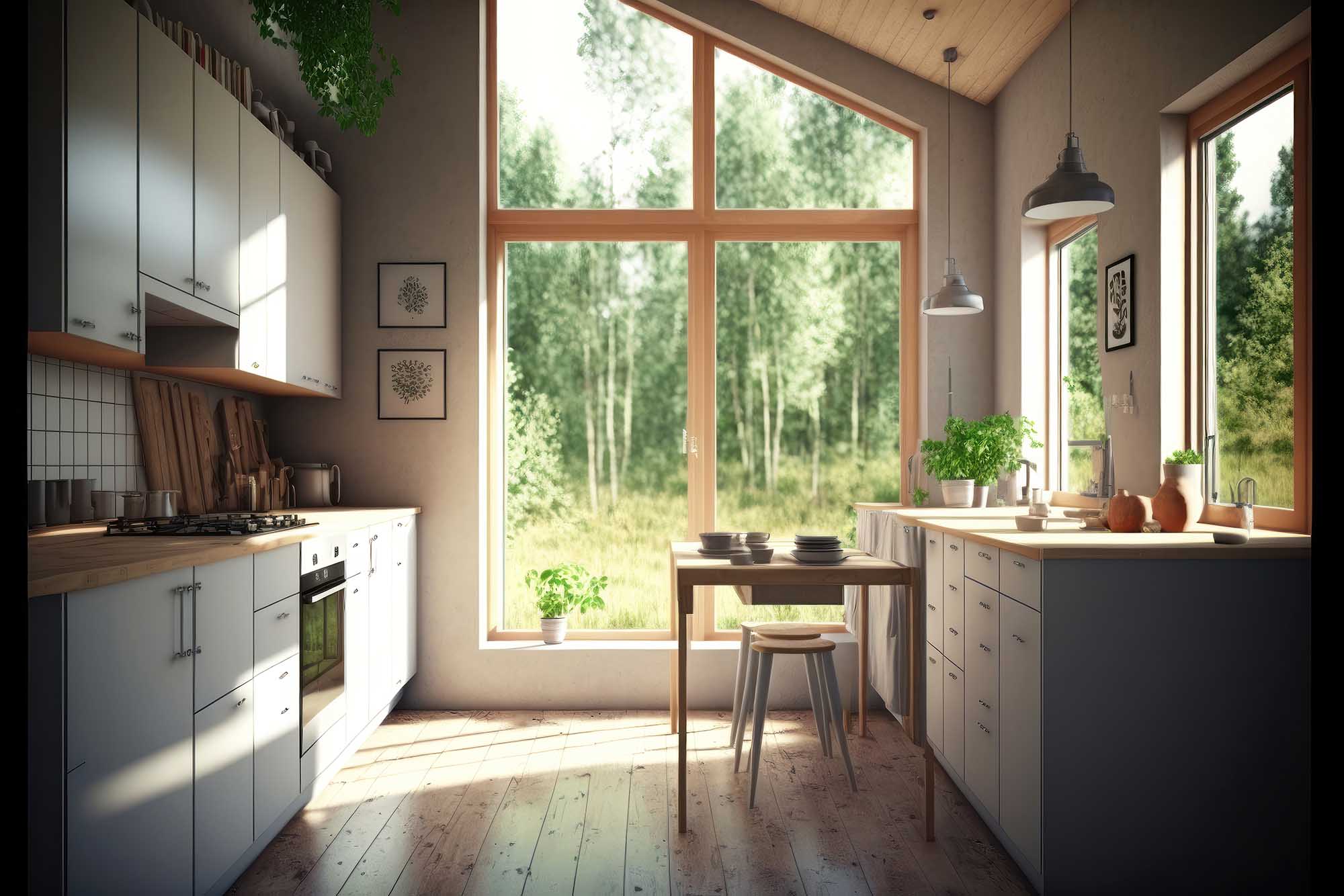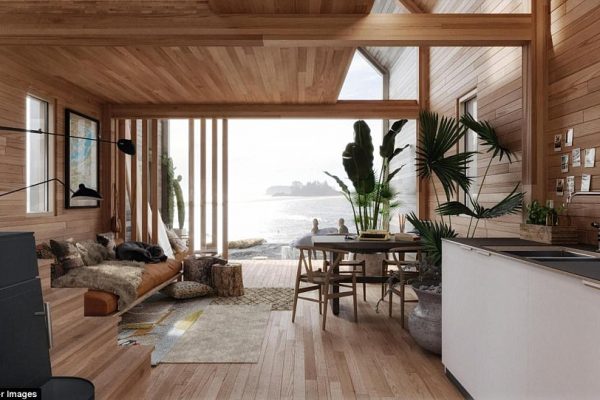Renovating can be one of the most wasteful things we do at home — but it doesn’t have to be.
With the right planning and a few smart swaps, it’s possible to create a home that’s more efficient, healthier to live in, and far less damaging to the planet.
This guide breaks it down room by room with practical tips and sustainable swaps that can make a real difference to your wallet, your health, and the planet.

Energy-Efficient Kitchen Renovation Tips
The kitchen is one of the biggest energy users in the home. This space can either make your energy bills climb or become one of the most efficient parts of the house.
Start by working with what you have.
If the existing layout functions well, consider keeping the cabinet carcasses and updating only the doors, benchtops, or handles, which will help reduce the waste and the cost. When you’re choosing all your new kitchen bits, look for recycled content or FSC-certified timber with low-VOC finishes to avoid indoor air pollution.
Switching to an all-electric kitchen is one of the most futureproof things you can do. Induction cooktops are efficient, fast, and safer than gas, especially for families. Pair with a high-efficiency electric oven, a vented rangehood, and appliances with strong energy ratings. Your fridge and dishwasher run the most, so choose well, every star counts when it comes to long-term savings.
Sustainable Bathroom Design Ideas
Bathrooms may be small, but they can generate a surprising amount of waste during a renovation. That makes them an ideal space to rethink your materials and approach.
Tiles are the main resource in bathrooms, and can add up quickly in cost. Start with what you can reuse or source locally. Check local salvage yards or tile suppliers for leftover or seconds stock, often cheaper, sometimes more unique. Many suppliers offer discounted “seconds” with tiny imperfections that are still perfectly usable.
If you’re buying new, look for brands with sustainability credentials (such as GreenTag or GECA certifications). If you’re in Sydney and want to browse a wide range without blowing the budget, Sydney’s Biggest Tile Store is worth checking out.
Choose tapware and toilets with high WELS ratings. These are standard in Australia now, but there’s still a wide range in water efficiency. Aerators, flow restrictors, and dual-flush systems all help reduce water use without affecting performance.

How to Make Your Living Room More Sustainable
Living areas can be deceptively energy-hungry, especially if the house wasn’t built with insulation in mind.
If you only do one thing, prioritise insulation. Roof insulation is often the easiest to install and offers the biggest returns on comfort and energy bills. If wall insulation isn’t feasible, look for ways to improve thermal performance through window coverings and floor rugs.
Windows play a big role in both heat loss and gain. Double glazing is ideal, but not the only option. Secondary glazing or even thermal film can cut heat transfer significantly. Pair that with well-fitted honeycomb blinds or curtains with pelmets can help maintain a stable temperature and reduce the need for artificial heating and cooling.
Paint matters more than most people realise. Many conventional paints continue to release VOCs long after they dry. Choose low- or no-VOC paints with certified credentials, especially in areas that don’t get much ventilation.
And finally, lighting should suit how you use the space. How you light a room can affect both your power use and mood. LEDs are the only way to for longevity and energy efficiency. Layering lighting with a mix of overheads, floor lamps, and task lighting allows you to use only what you need, when you need it.
Bedroom Renovation Tips for Better Health and Comfort
We often forget the bedroom when we think about sustainable design, but it’s where we sleep, breathe, and spend about a third of our lives. That’s a good enough reason to care about air quality, insulation, and comfort.
Paint is a good starting point. Choose certified low-VOC or VOC-free options to reduce exposure to indoor air pollutants. Look for solid timber furniture (if budget’s tight, second-hand is your friend) instead of cheaper options made from particleboard or MDF, which can off-gas over time.
Insulation and window coverings are especially important here. Bedrooms tend to benefit from thermal curtains or honeycomb blinds, which keep warmth in during winter and block heat in summer. For bedding, opt for natural fibres like cotton, linen, or wool, they’re more breathable and usually last longer with proper care.
Easy Low-Cost Sustainable Renovation Upgrades
Not every sustainable update needs to involve knocking down walls. These smaller changes can boost your home’s energy efficiency and comfort with minimal cost or disruption:
- Seal gaps around doors and windows to reduce draughts
- Add ceiling fans to cut down on cooling needs
- Switch all lighting to warm LED bulbs
- Install curtains with pelmets or honeycomb blinds
- Opt for eco-certified paints, sealants, and adhesives
- Shop second-hand for fixtures, lights, and materials before buying new


